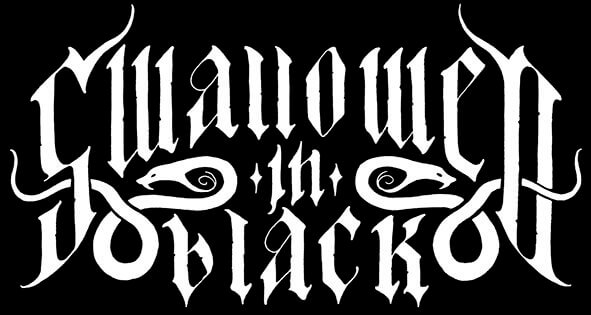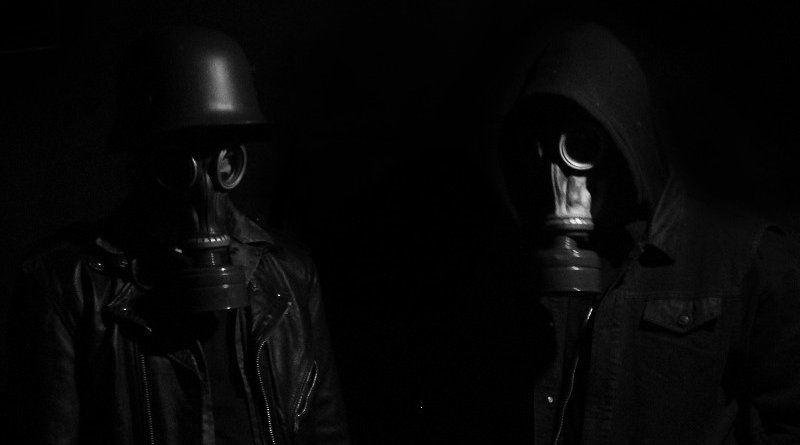“THE RETURN TO THE TRENCHES OF THE WESTERN FRONT WAS AN INTENTIONAL DECISION THAT TAKES THE BAND BACK AROUND, FULL CIRCLE, TO WHERE I BEGAN” – KRIEGSHAMMER (MINENWERFER)
Bathed in the eerie crimson glow of the Somme, riddled with lice, hobbled by trench foot, malnourished, sleep-deprived and with the deafening din of heavy artillery ringing in our ears, Generalfeldmarschall Kriegshammer takes me on a guided tour of the trenches that characterised the Western Front during WWI. As we navigate the ingenious subterranean labyrinth extending for miles beneath the battlefield, our conversation shifts from the ferocious yet masterfully-crafted fourth Minenwerfer full-length offensive, ‘Feuerwalze’, to memoirs from the frontline, creeping barrages, night bombardments, the spectre of profound change lurking ominously on the horizon, and how war will always be with us in some shape or form. Morale is high and the human spirit transcends the ravaged flesh as we approach our journey’s end. Soon, fuelled by courage, strength and honour, we will exit the shelter and comparative comfort of entrenchment, racing valiantly into no man’s land, to be forever immortalised in history.
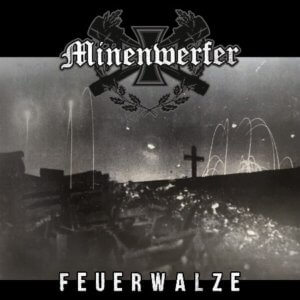 The five senses are hammered relentlessly. Ears tortured by the cacophonous chorus of artillery fire, screams of agony and unanswered prayers; vision impaired by dust, smoke and fumes; nostrils assaulted by the overpowering stench of gas, filth and decomposing corpses. Death could visit at any moment … and it might grant a merciful release from this unspeakable manmade genocidal nightmare. Was the frontline in WWI the very personification of hell on earth? And how could we possibly find a more harrowing and horrific theme for a Black Metal album?
The five senses are hammered relentlessly. Ears tortured by the cacophonous chorus of artillery fire, screams of agony and unanswered prayers; vision impaired by dust, smoke and fumes; nostrils assaulted by the overpowering stench of gas, filth and decomposing corpses. Death could visit at any moment … and it might grant a merciful release from this unspeakable manmade genocidal nightmare. Was the frontline in WWI the very personification of hell on earth? And how could we possibly find a more harrowing and horrific theme for a Black Metal album?
“I believe it probably was to a certain extent. An interesting aspect that seems to get glossed over is that if you read some of the primary sources you can see that there were a lot of cycles of nothing but hard labour and boredom. While the battles are exciting, intense, and sensational, they’re usually short bursts of brutality. It has been a few years since reading Storm of Steel, Le feu, and others, but a lot of those sources actually describe long stretches of nothing except constructing fortifications, digging trenches, unravelling barbed wire, caring for horses, and just generally waiting for something to happen. I’m sure there was a lot of anxiety tied up in that, so I could understand why some men just decided to form Shock Troop squads and jump into the thick of it. Not to be understated are the less-than-ideal living conditions: lice, disease, rats, malnutrition (especially as the war dragged on) and all that comes with the territory. I don’t think this is out of the ordinary or even unexpected for the time, though. Before this war you typically will see estimated deaths from disease much higher than deaths from combat.
“I think from either direction that you look at it, the combat or the conditions of day-to-day living, there’s enough there to fuel a few Black Metal albums. I’ve definitely written my fair share of songs about both aspects over the last 16 years. Unfortunately, I believe we have reached a point where, due to recent oversaturation, the topic as a Black Metal theme is growing stale.”
Published in 1916, Le fue was written by Henri Barbusse, who served as a French soldier in the trenches on the Western Front. WWI spawned a host of soldier-poets and novelists, whose stories provided intimate and graphic first-hand accounts of the ordeals they went through – compelling reading for those with an interest in military history. Presumably, as the winners of wars write history and therefore tend to be liberal with the truth, it is the writings of those who were on the frontline which offer the most dependable insight into the true (human) nature of this catastrophic armed conflict?
“In general that seems to be the case. Perhaps there is a reason that All Quiet on the Western Front, a fictional account based around Remarque’s experiences, is considered the ‘definitive’ WWI novel. It’s a much different take than that of Jünger or even someone arguably more famous like Richthofen. If you want to get into even more interesting takes on things that you’ll never hear, it can be worth finding Ludendorff’s memoirs. There are plenty of other sources from American soldiers that make it sound like it was a jolly old adventure. A lot of these works don’t fall in line with the anti-war sentiments of Remarque’s book, so they tend to be buried, shunned, or haven’t been reprinted since the 1920s. While they are memoirs from flawed people, and likely romanticised and / or embellished, they are worth taking a look at to see a different perspective.”
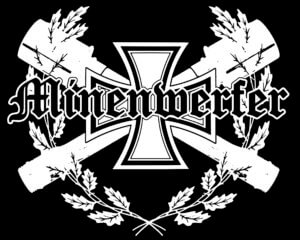 Down through the decades, World War I has remained a constant source of inspiration to creative artists – from writers and movie makers to musicians across all genres, but obviously including Black Metal. Marduk, Endstille and 1914 are just a few that spring immediately to mind. Specifically concerning Minenwerfer, can you recall what prompted you to incorporate your fascination with war – and trench warfare in particular – into your art?
Down through the decades, World War I has remained a constant source of inspiration to creative artists – from writers and movie makers to musicians across all genres, but obviously including Black Metal. Marduk, Endstille and 1914 are just a few that spring immediately to mind. Specifically concerning Minenwerfer, can you recall what prompted you to incorporate your fascination with war – and trench warfare in particular – into your art?
“It all goes back to Storm of Steel. That book is the reason for the band’s existence. I read it when I was 18 years old, and here I am talking about it 16 years later. I’m glad I started there, because had I started with All Quiet I would probably never have been inspired to do the original demo. In fact, I would go as far to say that the book not only inspired the band’s existence, but also led me to changing my major in college from music to history. Both of which are absolutely useless and I do not recommend pursuing them in the slightest bit.”
One of the most unbelievable things about the Great War is that it really happened. It is not the fictional creation of the twisted imagination of some death-obsessed author with a fetish for blood but a real life massacre on an unimaginable scale that actually took place – and not much more than 100 years ago. Do you struggle to get your head around the fact that this is a genuine historical episode that real people lived – and died – through, or have you studied and obsessed over this subject in such depth that you can almost imagine what it felt like to be there in the trenches?
“After all these years of research I suppose I’ve almost become desensitised to it. It does become difficult to grasp the sheer scale of what happened, but when you start looking at the maps, numbers, divisions, or even whole armies that can now just be depicted as a single NATO military counter, there ends up being a disconnect. Play any military conflict simulation and after a while you’ll forget that you’re moving around a symbol that could represent 100,000 men. Perhaps that’s how the generals were able to make cold, calculated decisions.”
Although movies must obviously be digested with a healthy pinch of salt due to their oftentimes dubious dramatisation of events, the German film ‘All Quiet on the Western Front’, which was released last year and is to at least some extent based on the aforementioned novel of the same name by WWI veteran Erich Maria Remarque detailing his own personal experiences, was a sobering watch. It is striking how idealistic and naïve the German soldiers were as they gullibly volunteered to go to war, how misled, misguided and oblivious they are to what fate awaits them. Perhaps the real enemy is not the stranger you meet on the battlefield but those who sent you there? Isn’t it the empires and alliances who send young men to their deaths who demonstrate most contempt for their lives rather than those who endeavour to physically kill them?
“I actually haven’t watched any of the new WWI movies that have been released for the past decade or so. I could be wrong, but based on trailers they all kind of look the same to me. I’m not exactly sure why All Quiet needed to be remade again anyway. The 1930 version and the 1979 version were both perfectly fine films. There’s thousands of other stories from the war that can be adapted into a film. It’s probably too difficult for Hollywood to shoehorn Americans into a WWI film due to their limited involvement in most of the major battles and campaigns, so we just get the same old stories readapted for ‘modern audiences’ because they know they’ll sell. Maybe I’m just cynical or maybe my interest has really just diminished.
“There’s always the old ‘lions led by donkeys’ phrase when talking about the war. There is probably a decent amount of validity about that statement, but it’s not like there weren’t any revolts, pushbacks, or upheavals. Some were obviously more successful than others. Arguably that’s one of the factors that finally ended the war.
“It kind of goes back to moving divisions and regiments around on a map and forgetting that those aren’t numbers, but people. I do think that beginning somewhere in the 19th century, the technological advancements in communication allowed for the high ranking brass to be completely absent from the battlefield and that left a major impression on the face of modern war. Had Napoleon been removed from the battlefield, would his armies still have found victory as often as they did? How much faith do you have in your leaders if they aren’t there with you and their only consequence for failure is a demotion as opposed to death? I suppose that is a whole different discussion, because you can really get in the weeds if you start looking at aspects of the Peninsular War and so on.”
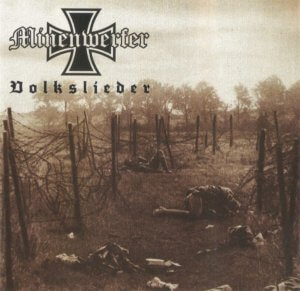 Returning to the terror of the trenches from the freezing and harrowing detour across the alpine front that was its predecessor, ‘Alpenpässe’, the fantastic fourth Minenwerfer full-length, ‘Feuerwalze’, is a suitably devastating, pummelling bombardment of barbaric audial obliteration that perfectly conveys the horror of warfare. What exactly was the ‘fire waltz’ offensive that gives the album its title and where was it deployed? Was it a form of creeping barrage? Typically, what weaponry was used and how effective did Feuerwalze prove to be?
Returning to the terror of the trenches from the freezing and harrowing detour across the alpine front that was its predecessor, ‘Alpenpässe’, the fantastic fourth Minenwerfer full-length, ‘Feuerwalze’, is a suitably devastating, pummelling bombardment of barbaric audial obliteration that perfectly conveys the horror of warfare. What exactly was the ‘fire waltz’ offensive that gives the album its title and where was it deployed? Was it a form of creeping barrage? Typically, what weaponry was used and how effective did Feuerwalze prove to be?
“Essentially it was a creeping barrage usually employed with heavy artillery as an offensive tactic. I felt that the title of this album should be straight to the point and that it would reflect the music best. From 1915 forward, it became a fairly widespread tactic employed by all armies that would become more refined over time. How effective it actually was is up for debate.
“The return to the trenches of the Western Front was an intentional decision that takes the band back around, full circle, to where I began. Strangely enough it’s a topic I haven’t touched since ‘Volkslieder’ all the way back in 2010. ‘Feuerwalze’ is a very reactionary album coming from ‘Alpenpässe’. I see ‘Feuerwalze’ as an ending chapter in the band’s history in many aspects. All of my concern and focus has shifted towards the next chapter of the band’s story in which there will be some profound changes.”
With a shift of focus or change of direction seemingly on the horizon for Minenwerfer, ‘Feuerwalze’ constitutes a potent and devastating declaration with which to close the current chapter. In many respects the zenith of what War Black Metal can and should be, the album delivers the best of both worlds: brutal barbarity and uncanny musicality. Anyone seeking all-out punishing sonic ferocity will not be disappointed by ‘Feuerwalze’ but this is most certainly not an exercise in mindless aggression or violence purely for the sake of it. There is an abundance of very meticulous songcraft on display here – clearly you have gone to great lengths to construct an ambitious and well-rounded recording with everything carefully considered and woven into its rightful place?
“I think of our songwriting as a highly disciplined affair. Crafting the songs, working on arrangements, and riff writing is really the core concern and ultimate priority in this band. You can write about interesting battles, generals, soldiers, weapons, etc., but if you don’t have the music part of it actually enjoyable or at least well executed enough to propel your narrative, all of that is completely worthless. I think that’s the main problem with so many newer bands: too much focus on the aesthetics and not enough on the actual music. We intentionally write music that is technically challenging and brutal, but also musical. That is one reason for the abundance of guitar solos. So much of the ‘war metal’ out there can be great blasts of brutality, but once the album is over I can’t recall a single riff from what I just listened to. This is something we do our best to avoid.
“We also decided that we don’t need to put out a bunch of pointless releases in between albums as filler to keep people interested. We don’t intend to just slop things out to be relevant. Since we don’t play live either, we’re not wasting time preparing for shows and relearning old songs; we’re mainly concerned with keeping our releases as high quality as possible, even if that requires three or four years between them.”
The album opens with ‘Cemetery Fields’, which commemorates the Somme offensive – one of the largest, bloodiest and costliest battles in history. In an attempt to break an enduring muddy stalemate of trench warfare, the Allies attacked German defences along a 25-mile front on the River Somme in northern France. On the opening day alone – July 1st, 1916 – the British sustained 57,000 casualties, more than one third of these killed in combat. A bloody battle of attrition raged for more than five months, with over one million men on both sides either killed or maimed. When the campaign ended after 141 agonising days, the Allies had advanced a mere seven miles and had failed to break the German line. Often cited as the very epitome of the senseless carnage of trench warfare and war in general, was this offensive a complete failure or did it contribute immeasurably to ultimate victory on the Western Front?
“Depends all on how you view it and from which perspective. If a breakthrough was the goal (typically the case), it was a failure. If playing the numbers game through attrition was the goal, then I suppose it’s a victory of sorts. The Allies always had greater numbers than the Central Powers. The British have claimed it was a victory for them years after the fact, but was it really?”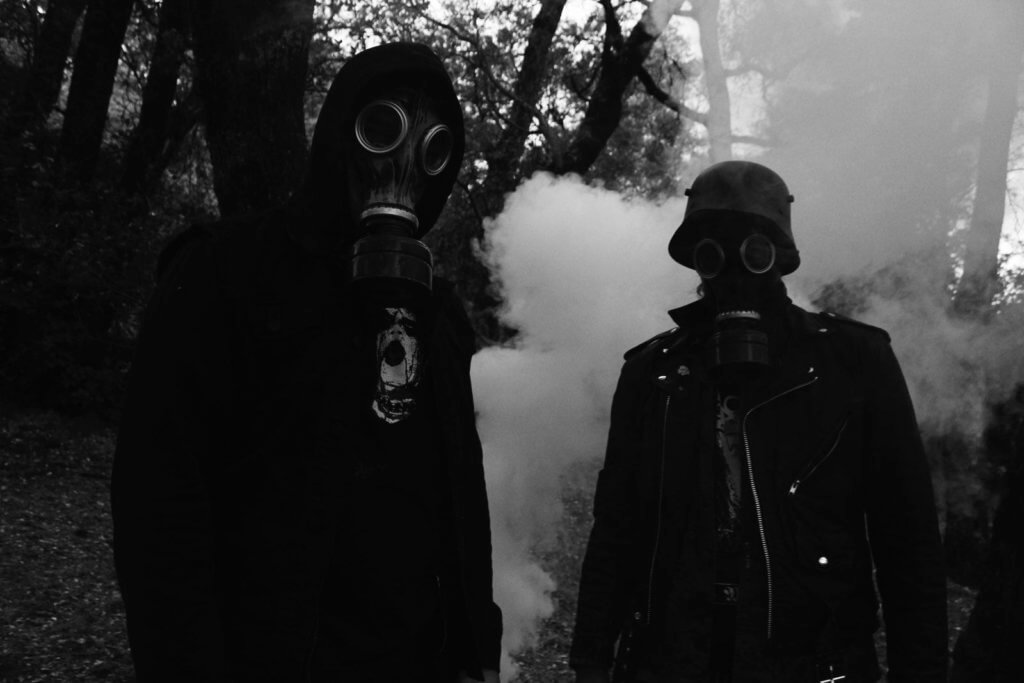
Stretching 475 miles from the North Sea to the Swiss border, the Western Front remained stubbornly static for the duration of the war. Behind and beneath the reeking trenches, elaborate tunnels and living / dying spaces were built – an incredible feat of against-the-odds engineering ingenuity. These macabre subterranean constructs of death are celebrated on ‘Feuerwalze’s monumental parting shot, ‘Labyrinthine Trench Sectors’ (complete with glorious barbed wire bass!): ‘Winding, twisting, corridors of hell, strewn with fallen, their tales forgotten; blood washed walls, in every direction, lost, lost in this maze, a network of pain, wire and grenades, an elaborate coffin for the dead’. What an amazing achievement to build these temporary constructs under such circumstances … and what must it be like to be posted within the ‘labyrinthine purgatory’?
“I remember looking at aerial maps of the battleground and seeing endless trench networks weaving in and out of each other back and forth. Sectors of trenches were given titles and individual trenches themselves were almost-comically given names and street signs in some cases. That was the initial inspiration for the song.
“The track was crafted almost completely by the Wachtmeister and may even be my favourite from the record. The song is very complex with a lot of changes jam packed together with very little repetition. I attempted to write many of the bass lines around the guitar, rather than with it, to increase the tension and chaotic nature of the song. The meter of the vocal pattern in the first section of the song is also odd and disjointed. Both the song and the trenches being claustrophobic and maze-like seemed to work perfectly.”
Trenches returned to Europe in 2022 and there are men dug into them as we speak. With the introduction to the battlefield of more powerful armoury during the second world war, followed by technologically advanced innovations such as missiles, rockets and drones to take the potential of air strikes to a game-changing new level, I assumed that this type of warfare might be a thing of the past … but it seems that when two armies meet in an open space and neither is prepared to retreat, downwards is still the only way to go? Due to the very nature of territorial disputes, will trench warfare inevitably always have some role to play in most conflicts?
“Possibly. I am pretty unfamiliar with the recent examples, but I know that trenches and tunnels were a factor during Vietnam. Beyond that, I’m not sure. How safe a trench can be with satellite targeting systems and drones? Honestly, I don’t really have much interest in 21st century warfare. I guess I’m content living in the past.”
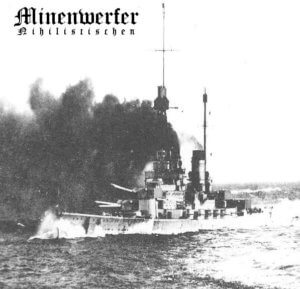 War seems to be ingrained in the human DNA. To quote Friedrich Nietzsche and the title of the third instrumental on the second Minenwerfer full-length, ‘Nihilistischen’: ‘It is mere illusion and pretty sentiment to expect much from mankind if he forgets how to make war’. Are we destined to keep on fighting and perhaps ultimately destroy ourselves? Could the next major international conflict end in some sort of nuclear armageddon? Or is the threat of nuclear annihilation overstated?
War seems to be ingrained in the human DNA. To quote Friedrich Nietzsche and the title of the third instrumental on the second Minenwerfer full-length, ‘Nihilistischen’: ‘It is mere illusion and pretty sentiment to expect much from mankind if he forgets how to make war’. Are we destined to keep on fighting and perhaps ultimately destroy ourselves? Could the next major international conflict end in some sort of nuclear armageddon? Or is the threat of nuclear annihilation overstated?
“I think it’s overstated, but who knows? If nuclear war was going to happen it probably would have already. War will always be with us. It’s been there as far back as you can go regardless of culture, religion, politics or location. It’s probably embedded in our DNA. Even if we go back to sticks and stones, it’ll be there. People seem to be uncomfortable with that.”
With the silhouette of a large cross clearly visible against the illuminated night sky, it is indeed a striking, evocative and haunting scene. What is the image depicted on the front cover of ‘Feuerwalze’ and what were the aspects of this picture that appealed most to you in making it suitable for the cover of a Minenwerfer record?
“It’s a photo of night bombardments by the British on Beaumont Hamel during the Battle of Albert, which was the opening couple of weeks of the Battle of the Somme. I believe the cross was probably a shallow grave or something up close to the edge of the trench. The album has a secondary theme of night time attacks, which seems to be a common part of the campaign. We ran with this idea, as evidenced with ‘Nachtschrek’ and ‘Sturmtruppen III’s lyrics. We also felt it was a nice contrast to our past albums. We have always used photos. When it comes to historical themes I’m not a fan of generic metal band cover art. I think using art from the period is much more genuine and authentic. Photos tell a much better story, and honestly they stick out way more. I know plenty of people checked out the previous album based on the cover photo alone. Had it been some kind of art we commissioned that looks like everything and everyone else, it wouldn’t have had the same effect.”
‘Feuerwalze’ will be released on CD, cassette, LP and digital version by Osmose Productions on March 10th. Have you had a chance to run your eyes and ears over the physical products yet and, if so, how do they look and sound to you? The label has also recently reissued the first three albums so all in all it is very much a case of onwards and upwards for Minenwerfer right now…
“Not yet. I know what all the physical media will look like, but I have yet to actually have any of it in my hands. Osmose’s reissues of our back catalogue are all high quality, so I know the finished product will be perfect. Hopefully everyone can see the amount of work that goes into crafting our records, both musically and aesthetically.”
